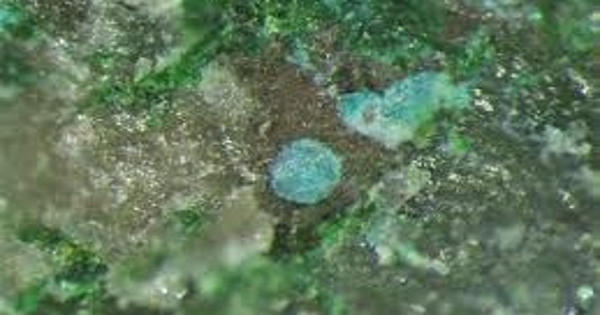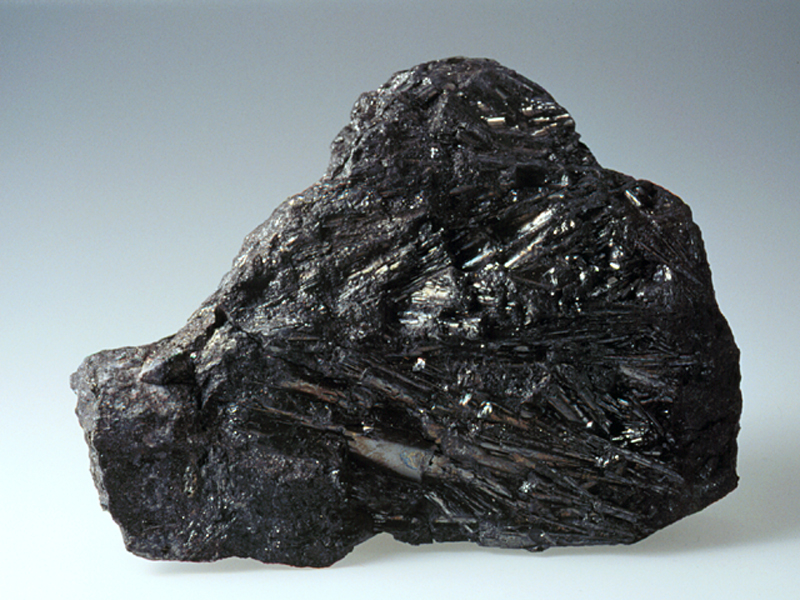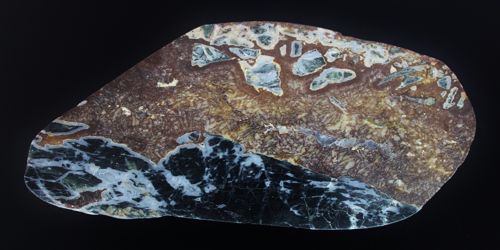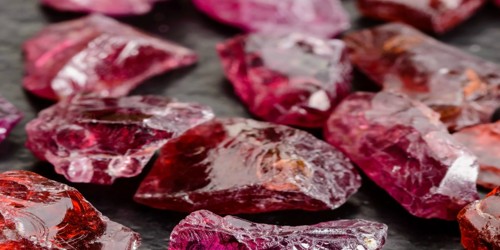Bluebellite is a mineral discovered in 2013 in the Blue Bell Mine in the Mojave Desert, California at the same time as the discovery of mojaveite. It is a copper iodate mineral. This mineral was named after its locality since the Blue Bell Mine claims most of the surrounding area. The only observed forms of this mineral are the {001} and {001}.
Bluebellite is known to form bright bluish-green flattened plates or flakes that are range up to 20 x 20 x 5 nm in size, commonly inter-grown in irregular aggregates. Bluebellite and mojaveite are very similar in structure, they are only differentiated by their unique mineral composition.
Physical Properties
Bluebellite has an adamantine luster and has an overall bright bluish-green color. This sometimes has a dull appearance because of the roughness of the surface. The streak is pale bluish green and the lustre is adamantine, but often appears dull because of surface roughness. It is very soft, a 1 on the Mohs hardness scale. Bluebellite has a pale blueish-green streak and has an uneven fracture. It has perfect cleavage along the {001} plane.
- Lustre: Adamantine
- Comment: appears often dull because of surface roughness
- Colour: Bright bluish-green
- Streak: Pale bluish green
- Hardness: 1 on Mohs scale
- Tenacity: Sectile
- Cleavage: Perfect on {001}
- Fracture: Irregular/Uneven
- Density: 4.746 g/cm3 (Calculated)
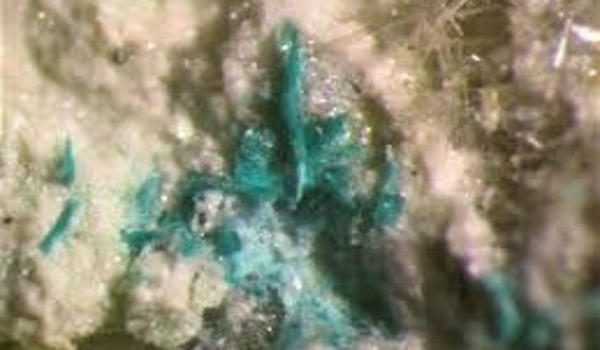
Occurrence
Bluebellite was discovered within the D-shaft of the Bluebell mine in the Mojave Desert, California. The type locality for bluebellite is the D shaft, Blue Bell claims, near Baker, San Bernardino County, California, while cotype localities for mojaveite are the E pit at Blue Bell claims and also the Bird Nest drift, Otto Mountain, also near Baker.
The surrounding rock was composed of very siliceous hornfels along with murdochite, calcite, fluorite, and hemimorphite. This new mineral was discovered along with mojaveite within the Blue Bell area. Bluebellite is associated particularly with murdochite, but also with calcite, fluorite, hemimorphite and rarely dioptase in a highly siliceous hornfels.
Information Source:
